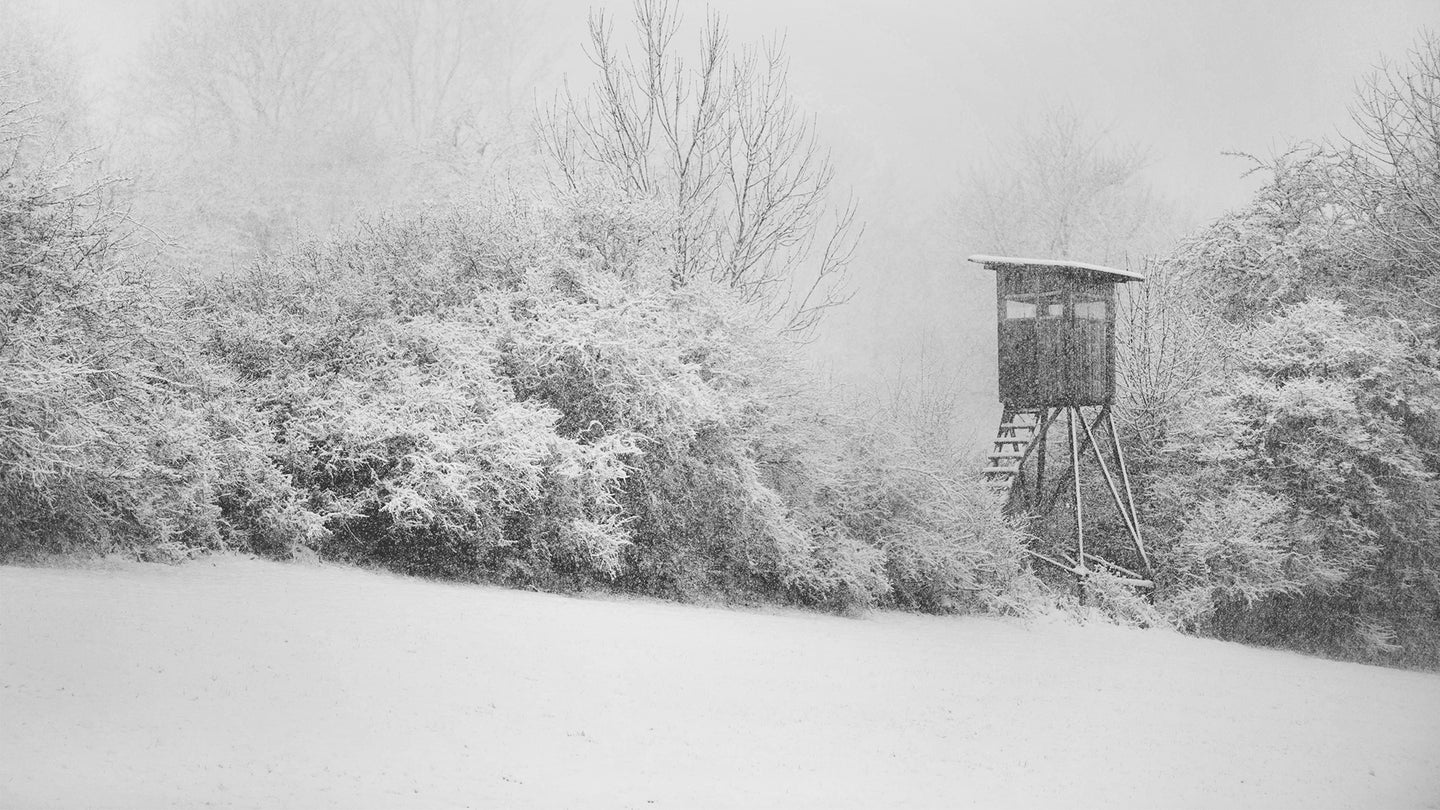A Week in Hunting Camp: The Legend of Cowhorn

Dvorakova Veronika / Adobe Stock
Editor’s Note: All this week, through Sunday, we are bringing you a series called A Week In Hunting Camp—seven stories in total, each one about a single day (or night) in camp, featuring both original works and a few modern classics from the archives. You can read the Day 1 story, The Mule Deer Highway, here.
Day Two: The Legend of Cowhorn
Back at camp after the morning hunt, I overheard the guides talking. They were worked up about something. Apparently, one of them had seen Cowhorn.
“Who’s Cowhorn?” I asked.
“Dude, Cowhorn is a legend,” they told me.
Since they’d first seen Cowhorn, years ago, the buck had only ever grown a spike on his left side—a heavy, sweeping dagger, like the horn of a cow. His right side, meanwhile, was so enormous that any hunter who saw him, no matter how discriminating, let fly.
Cowhorn, the guides said, was the most shot-at buck in the camp’s history. During the previous fall alone, when the 6-year-old deer was already declining, hunters took no less than 11 cracks at him—all with scoped rifles, a couple under 50 yards. Not one shot parted a hair.
“That buck can’t be killed,” one of guides said flatly.
And right then, I knew exactly what deer I wanted to go after for the afternoon hunt. The guides warned me that he’d gone way downhill since the previous year—wouldn’t score much now. But I didn’t care about that. I wanted Cowhorn.
* * *
The wind pushed curtains of light snow across the Nebraska prairie outside the window of the box blind. Out in front of us, a meadow stretched 300 yards to where the wood’s edge dropped steeply to the river bottom. Through the binocular, I spotted a horse’s body with a deer’s head. The buck was bedded on a narrow flat 20 yards into the timber. I could see the white sheet covering his back and could just make out a dusting of flakes capping his forehead and fringing his ears and antlers. Then I saw the long, curved horn.
It was a makeable shot, but my guide, Caleb, felt sure the buck would eventually work his way into field, so we waited. Sure enough, about 45 minutes before dusk, Cowhorn stood up and vanished behind a wall of brush. Ahead of him, a doe stepped into the meadow and started feeding. It was the peak of the rut.
In the time it took me to get my gun up and settle in for a shot, what were curtains of light snow had morphed into a full-blown blizzard, and through the screen of parachuting flakes, in the footsteps of the doe before him, a buck stepped onto the prairie.
“That’s him. That’s Cowhorn,” Caleb whispered.
The guides had been right earlier; now that the buck was standing in the open, even through the snow, I could see in the scope that his rack wasn’t very impressive. But its configuration was unmistakable.
“Two hundred and seventy-five,” said Caleb. “Whenever you’re ready.”
I knew I’d made a good shot, and so did Caleb, who’d been watching through his binocular and said the buck had mule-kicked before crashing, tail tucked, back into the woods. Finally, after half a minute of just staring into his glass, my guide lowered the optic and snapped his head at me, incredulous.
“You just killed Cowhorn!” he said. “I never thought it could happen.”
There was no blood where the buck had been standing, but that didn’t worry us. We got on the scuffed tracks and followed them a short way over the prairie, to the edge of the timber, which was where I glanced up—and stopped in my tracks.
Down on the riverbank, not 60 yards away, stood Cowhorn. There was no doubt about it. The late sun had turned the river’s surface into a glittering pane, and perfectly silhouetted against it was the buck’s clean, tall-tined right side—and that crazy, heavy hook on the left. Only the rack looked bigger now.
I snapped the gun to my shoulder but couldn’t find him in the scope. I panned left and right. Nothing. Finally, I let down and combed the river bank with my unaided eyes. Cowhorn was gone. He might as well have sprouted wings and flown away.
At the bank there wasn’t even a hint that the buck had been hit. No blood. No missteps in his tracks. Caleb and I began walking back up to the prairie, back to the beginning, to make sure we hadn’t overlooked anything. Weaving through a patch of low pines, we practically stumbled on the dead buck.
The right side of his rack, sticking up above the snow, had four clean points; the left was jammed under a blowdown. I grabbed the rack, Caleb lifted the log, and one inch at a time, we unsheathed a long, curved dagger.
We stood there perplexed for a second. Nothing made sense. But then we looked closer. The rack was too small, and the long, sleek body wasn’t that of a grizzled survivor.
“Oh my God,” said Caleb. “You killed Cowhorn Jr.”
* * *
Caleb felt bad that he’d let me shoot the wrong buck, and he kept apologizing in the truck as we rode to camp. But I was happy—even a little unexpectedly so. “Don’t worry about it,” I said. “We’ve got a hell of a story to tell when we get back.” Once he knew he was off the hook, he relaxed and couldn’t help expressing what he really felt. Which was O.K., because I was feeling it, too.
“Dude,” he said. “Cowhorn lives!”
The post A Week in Hunting Camp: The Legend of Cowhorn appeared first on Field & Stream.
Articles may contain affiliate links which enable us to share in the revenue of any purchases made.
